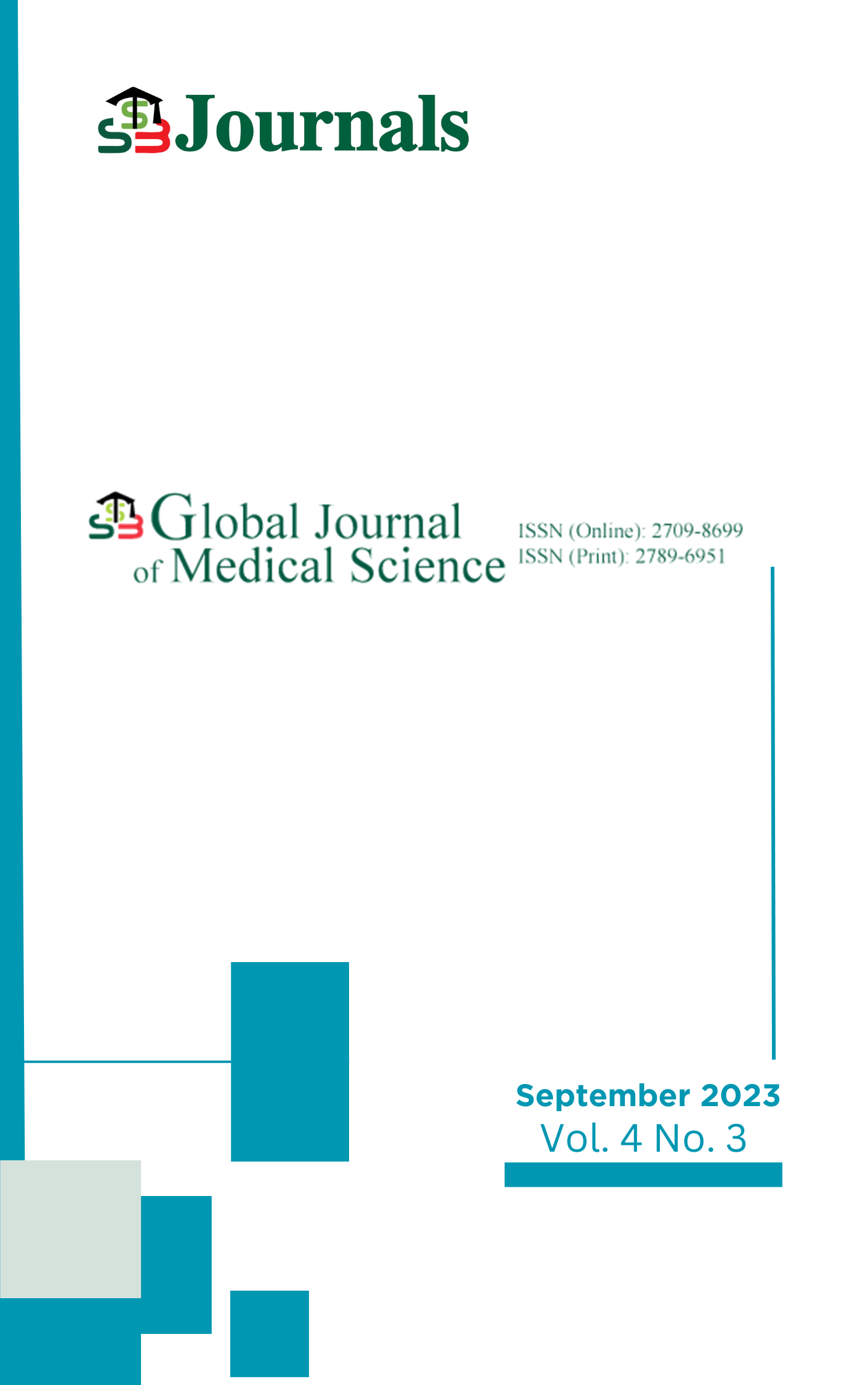Perinatal Outcome and Preventable Causes of Morbidity and Mortality in Eclampsia: A Cross-Sectional Observational Study in a Tertiary Hospital in Bangladesh
DOI:
https://doi.org/10.61561/ssbj.v4i3.35Keywords:
Eclampsia, Pre- Eclampsia, Pregnancy, Primipara, PreventionAbstract
Background: Eclampsia poses a substantial threat to perinatal health in developing countries, with Bangladesh experiencing a notable impact on infant well-being. This cross-sectional observational study, conducted at Enam Medical College Hospital, Savar, Dhaka, aimed to investigate perinatal outcomes in eclampsia patients and identify preventable causes of perinatal mortality and morbidity associated with this condition. The study period spanned from June 2015 to July 2017, with a focus on understanding the specific factors contributing to adverse perinatal events in this population. Methods: A total of 155 eclampsia patients were enrolled in the study, resulting in the delivery of 161 babies, including six sets of twins. The study employed a comprehensive observational approach, assessing maternal and fetal conditions to analyze their correlation with perinatal outcomes. Data collection and analysis were conducted in the Department of Obstetrics and Gynaecology at the tertiary hospital, employing standard protocols and statistical methods to derive meaningful insights. Results: The study revealed a perinatal death rate of 27.32%, with stillbirth accounting for 15.52% and early neonatal death for 11.80%. In contrast, 84.47% of babies were born healthy. Among live-born neonates, 27.94% experienced jaundice, while 30.88% had no complications. Prematurity emerged as a significant contributor to perinatal loss in eclampsia cases. The findings underscore the critical role of early referral of eclampsia patients, the implementation of timely resuscitative measures, and improved neonatal care as potential avenues to enhance perinatal outcomes. Conclusion: In conclusion, this study highlights the importance of addressing stillbirth as a predominant component of perinatal death in eclampsia cases. Prematurity was identified as a key factor contributing to adverse perinatal outcomes. Early referral of eclampsia patients and the implementation of resuscitative measures, coupled with enhanced neonatal care, are crucial interventions that can potentially mitigate perinatal morbidity and mortality associated with eclampsia in the context of a tertiary hospital setting in Bangladesh. These findings provide valuable insights for healthcare practitioners and policymakers to guide strategies aimed at improving perinatal outcomes in similar healthcare settings.
References
Arias F, Bhide AG, Arulkumaran S, Damania K, Daftary SN. Practical Guide to High-Risk Pregnancy and Delivery-E-Book. Elsevier health sciences; 2012.
Preeclampsia Foundation. Preeclampsia and Maternal Mortality: a Global Burden. 2015.
World Health Organization. WHO recommendations for prevention and treatment of pre-eclampsia and eclampsia. 2011.
Alam IP, Akhter S. Perinatal Outcome of Eclampsia in Dhaka Medical College Hospital.
Khatun S, Nilufar S, Bhuiyan AB, Begum K. Perinatal outcome in eclampsia. Bangladesh J Obstet Gynaecol 1994;9:53-60.
Shamsuddin L, Rouf S, Khatoon H. Perinatal outcome in eclampsia. Bangladesh J Obstet Gynaecol 1995;10:65-72.
Decherney AH, Pernoll ML. Current obstetric and gynaecologic diagnosis and treatment. 8th ed. Appleton and Lange, 1994; 184-5.
Khatun S, Nilufar S, Bhuiyan AB, Begum K. Perinatal outcome in eclampsia. Bangladesh J Obstet Gynaecol 1994; 9: 53-60.
Rao KB. Perinatal mortality. In: Ratnam SS, Rao KB, Kumaran SA. Obstetrics and gynaecology for postgraduates. Vol. 2, 1st ed. Chennai: Orient Longman Ltd., 1997; 20: 252-9.
Datta DC. Textbook of obstetric including perinatilogy and contraception. 4th ed. Calcutta. 1998; 51, 51, 236-9, 648-9.
Robson SC. Hypertension and renal disease in pregnancy. In: Edmonds DK, editor. Dewhurst’s textbook of obstetrics and gynaecology for postgraduates. 6th ed. London: Blackwell Science Ltd., 1999: 166-77.
Sibai BM. Maternal perinatal outcome in 254 consecutive cases. Am J Obstet Gynecol 1990; 163: 1049-54.
Shahabuddin AKM, Hasnat M, Hamid T, Rahman AKMF. Perinatal outcome in eclampsia. Bangladesh J Child Health 1996; 20: 8-14.
Shamsuddin L, Rouf S, Khatoon H. Perinatal outcome in eclampsia. Bangladesh J Obstet Gynaecol 1995; 10: 65-72.
Lope M, Lera L. Complicated eclampsia: fifteen years experience in a referral medical center. Am J Obstet Gynecol 1982; 192: 25-8.
Begum F, Begum R, Khatoon S. Management and outcome of eclampsia: a comparative study. In: Proceeding of First International Conference on Obstetrics and Gynaecology (OGSB), 11-14 December, 1992.
Newborn health in Bangladesh. A situation analysis. Survey Newborn Life (SNL), SCF (USA), 2001.
Akhter M. Study of hypertensive disorder of pregnancy in Mitford Hospital [dissertation], Dhaka: Bangladesh College of Physicians and Surgeons, 1994.
Begum A. A study of eclampsia in Dhaka Medical College Hospital for a period of six months (July to December, 1998). J Dhaka Med. Coll. 2000; 9: 71-4.
Newman MG, Robichaux AG, Stedman CM, Jaekle RK, Fontenot MT, Dotson T, Lewis DF. Perinatal outcomes in preeclampsia that is complicated by massive proteinuria. Am J Obstet Gynecol 2003; 188: 264-8.








